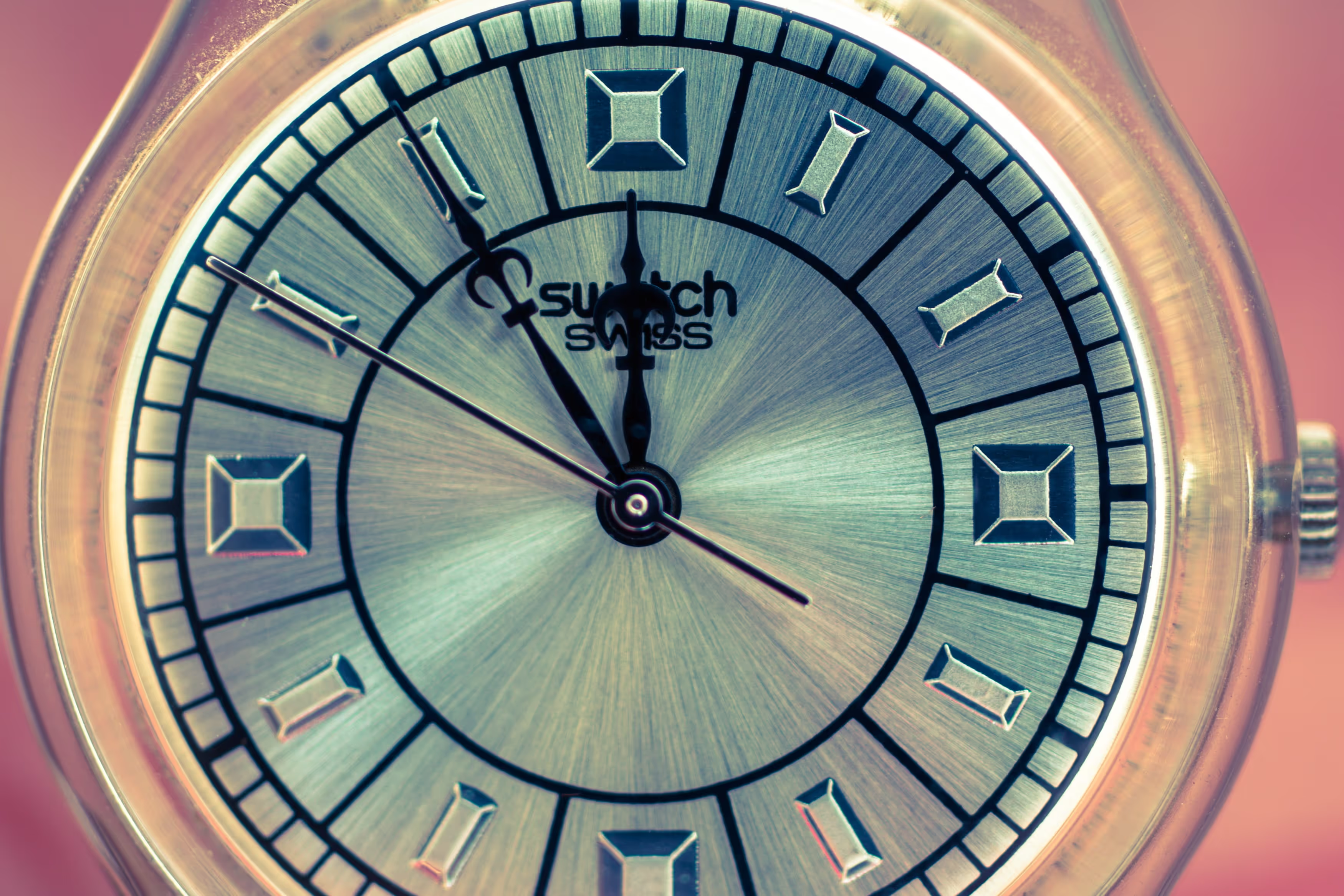Quartz crisis: lesson for the Swiss watch industry

There have been and are technical transformations in many industries. For example, when computers replaced the tried and tested typewriters and pocket calculators, or as the first mobile telephones replaced fixed network connections. What many people don't know: The watch industry was also struggling with a technical evolution “Made in Asia”, which primarily affected traditional manufacturers from Europe. Learn more about the so-called quartz crisis of the 1970s and 1980s and how a resourceful entrepreneur was able to save the industry in Switzerland.
How the quartz crisis began
Crystal oscillators have a long history as clocks, dating back to the 1920s. Since quartz always oscillates at the same frequency of 32.768 kHz when installed with an appropriate energy source (battery), this precision was used for vibrating crystals early on. To the The US company Bell Telephone Laboratories is one of the pioneers in their research. Initially, research focused primarily on stabilizing radio frequencies, but it soon became apparent that quartz crystals can also do a good job when it comes to measuring time. In 1928, for example, the Americans proudly presented the world's first quartz-controlled watch, which was more precise than all mechanical watches: the so-called “Crystal Clock.”
In the post-war period, quartz watches replaced the previously common precision pendulum clocks and became ever more compact. The watch manufacturer of all places Patek Philippe made significant contributions to this. As early as 1948, the Swiss founded a watch research department, which accelerated the switch from mechanics to electronics. In 1959, Patek Philippe brought the “Chronotome” the first portable quartz time indicator on the market for shipping and the military.
But the initial innovative advantage did not last long. The production of quartz watches was very expensive and the Swiss watch industry did not have the necessary flexibility to establish cheaper production processes. As a result, European companies were soon outstripped by competition from Asia, in particular Japan.
Precise quartz watches for the mass market
In addition to eleven Swiss works (including Omega), five quartz movements from the Japanese manufacturer Seiko Suwa have already taken part in the 1967 chronometer competitions. Although these were not of the highest quality, they also pursued another goal: mass market instead of luxury segment.
In 1969, Seiko brought the first commercially available, but still very expensive, quartz wristwatch onto the market. But development was rapid: As early as the mid-1970s, quartz watches were cheaper than watches with a purely mechanical movement. The Swiss's sluggishness and sense of tradition led to the most serious drop in sales that the watch industry had ever experienced. Switzerland's global watch market share was over 50 percent in the 1960s, but fell to just 24 percent in 1978. As a result of the quartz crisis, around 60,000 jobs were lost in Switzerland and it took until the beginning of the 1980s until the Management consultant Nicolas G. Hayek heralded the rescue of the Swiss watch industry.
Swatch saves Swiss watch industry
For many enthusiasts, electronic watches were considered the epitome of cheap and undemanding timepieces. But visionary Hayek saw things differently and criticized the industry: “There is a lack of entrepreneurial personalities in Switzerland with courage, imagination and vision.” That is why the consultant commissioned by the government and representatives of banks and the watch industry decided not to sell affected watch manufacturers, but to refurbish them. He proposed combining SSIH (Société Suisse de l'Industrie Horlogère SA) and ASUAG (Allgemeine Schweizerische Uhren AG) into one holding company and eventually Hayek even acquired the majority of shares in the new company. In his famous “Hayek Study,” he finally called for the production and distribution of a cheap “Second Watch”, s'watch for short. This inexpensive plastic watch was intended to flush money into the cash register, primarily due to high sales figures, in order to help SSIH and ASUAG out of the crisis. This was The origin of Swatch AG.
The fashionable and inexpensive Swatch plastic models with quartz movement provided a breath of fresh air and new sales. Many production facilities were operating at better capacity and the company returned to profitability. In addition, the Swiss market for mechanical luxury watches recovered, as quartz watches were barely an issue in the middle and upper price segments. After all, “Mr. Swatch” was even able to take over well-known watch brands such as Blancpain, Breguet or Glashütte Original and integrate them into the group. This is how the Swatch Group became the most important and largest company and savior of the Swiss watch industry.
Luxury quartz watches
Even today, opinions differ when it comes to the question of “quartz watch, automatic or mechanical watch.” Many collectors prefer the traditional manual winding or automatic drives, which are used in many expensive luxury watches. A number of well-known watch manufacturers — including Breitling, Chopard, Omega and TAG Heuer — also offer high-quality mechanical luxury watches as well as watches with quartz movements. Even Rolex launched a quartz watch at the end of the 1970s. With the Rolex Oysterquartz, the Geneva-based watch brand wanted and needed to follow the spirit of the times.
“Quartz or not quartz” is still primarily a matter of taste. Collectors and watch investors should therefore focus their attention on other factors before buying: the manufacture, the potential for appreciation and the condition of their favorite luxury watch.



